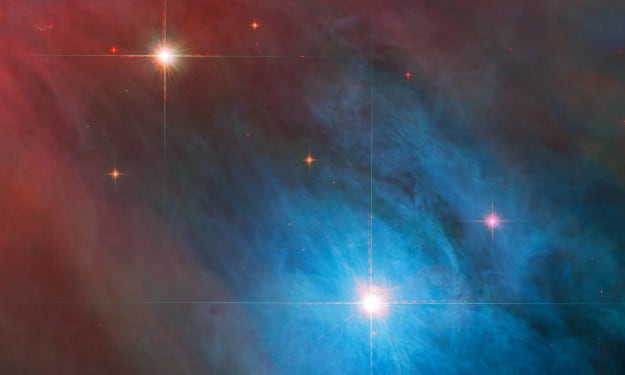
Plastic disease
**************************************
Plastic has changed our lifestyle to a great extent. Everything we use throughout the day, starting with our toothbrush in the morning, is plastic. Plastic has many qualities – it is waterproof, light and can be changed into many forms and shapes. Without this element our life is stagnant. But the major drawback of plastic is that it is not 'biodegradable' or biodegradable. Most of the different types of disposable plastic products are 'single use', i.e. those products that we use once and throw away. Although production and use of plastic thinner than 120 microns is prohibited in India, there is no restriction on the use of plastic for packaging purposes. Therefore, the packaging of TV, refrigerator, washing machine and various types of food products is dominated by plastic or thermocouple. 50% of the plastic waste generated in the world is used in packaging. That waste will remain in soil, water and air for thousands of years. As a result, plastic waste is covering the earth's soil, rivers and seas; Numerous microplastics are also floating in the air. Now 2 million plastic bags are used every minute around the world and each bag has a lifespan of only 12 minutes; If this trend continues, 120 million tons of plastic waste will end up in our ecosystem by 2050. This list of waste includes plastic bags, thermocouples, bottles, plates, bowls, spoons, straws, and many other discarded items.
When Leo Baekeland discovered artificial plastic in 1907, he certainly did not think that his discovery would turn out to be such a big crisis for civilization. It is not the creator's fault, it is the consumer's fault. Plastic or polyethylene is a compound made from crude petroleum, in which hydrogen, oxygen, carbon etc. elements are mixed. Between 1950 and 2015, the world produced 8.3 billion tons of plastic, and 79% of it ended up in landfills, such as Kolkata's landfills, or in water and soil; 12% is incinerated and only 9% is recycled.
If plastic is burned at a temperature of less than 1050 degrees Celsius, dioxin and furan gas mix in the air and if the poison enters our body with the air we breathe, there is a possibility of being affected by deadly diseases like cancer. Refusal Derived Fuel (RDF) can be produced from plastic-waste such as petroleum-based; Plastic is broken into small pieces and used as fuel in cement factories; Fuel oil can also be extracted from waste plastic. The work has started at the Central Mechanical Engineering Research Institute, Durgapur. But scientists are still not sure how safe this oil is as an alternative to petrol or diesel. However, that oil can be used as a lubricant or fuel for rolling mills.
Two profound environmental crises at this time are unbridled global warming and failure of plastic waste management. These two problems are interrelated. 850 million tons of greenhouse gases enter the air annually from plastic manufacturing processes and waste. If we are not restrained yet, then in 2050 the amount of that gas will increase to 2.8 billion tons. 1.27 crore tonnes of plastic waste that we throw away goes down rivers and drains into the ocean every year. Plastic accumulation in the North Pacific Ocean has created a dead zone or 'dead zone' covering 1.6 million square kilometres, almost five times the total area of India, where no animal can live. Scientists have named this barren area 'plastisphere'. Marine animals such as whales, sharks, turtles, dolphins, fish etc. mistakenly ingest plastic - and within two to three decades 90% of seabirds will find plastic in their stomachs, 600 species will be affected in some way and 15% of species will be endangered. The cost of plastic waste to marine ecosystems is estimated at US$13 billion each year.
Plastic breaks down in open nature under the influence of sun, water and wind into tiny particles or microplastics. Floating in water or floating in the air, these microplastics easily enter the human body through the food chain. Research by the Minnesota School of Public Health, World Wildlife Fund (WWF) and Newcastle University School of Public Health in Australia has revealed that microplastics have been found in 85% of the world's tap water. 21 grams of microplastic enters a person's body with drinking water and breath every month, i.e. 250 grams per year. How this poison can harm our body is still a matter of research.
According to the recently released NITI Aayog report, 34 lakh tonnes of plastic waste is generated in India every year. In our state there are three lakh tons. The Solid Waste Management Act was introduced in the country in 2016, then the Act was amended twice in 2021 and 2022. By law, plastic manufacturers are also required to take back and recycle the products they produce or sell at the end of their useful lives. 10 organizations are now engaged in plastic recycling in West Bengal. According to the order of His Highness Environment Court, biomining has started in 107 garbage heaps accumulated in various cities of the state, i.e. conversion of various waste materials into resources; Organic fertilizers, fuel or RDF, chairs-tables etc. are being manufactured. A 30 km road has been constructed from Burdwan to Bolpur by mixing plastic with bitumen; A few more experiments are underway.
A nationwide project called 'Mission Life' has been launched in 2023. The objective of Mission Life Project is to initiate the students towards eco-friendly lifestyle. Four mantras are essential to protect this endangered ecosystem. First, abandon single-use plastic bags and use jute or cloth bags; Second, use less plastic as far as possible; Third, reusing relatively thick plastic bags by washing and drying them; And fourth, making plastic-waste usable again in other forms. We have to be freed from this mental disorder that 'it is not my responsibility to keep the ecosystem healthy, someone else will fulfill that responsibility'.






Comments
There are no comments for this story
Be the first to respond and start the conversation.